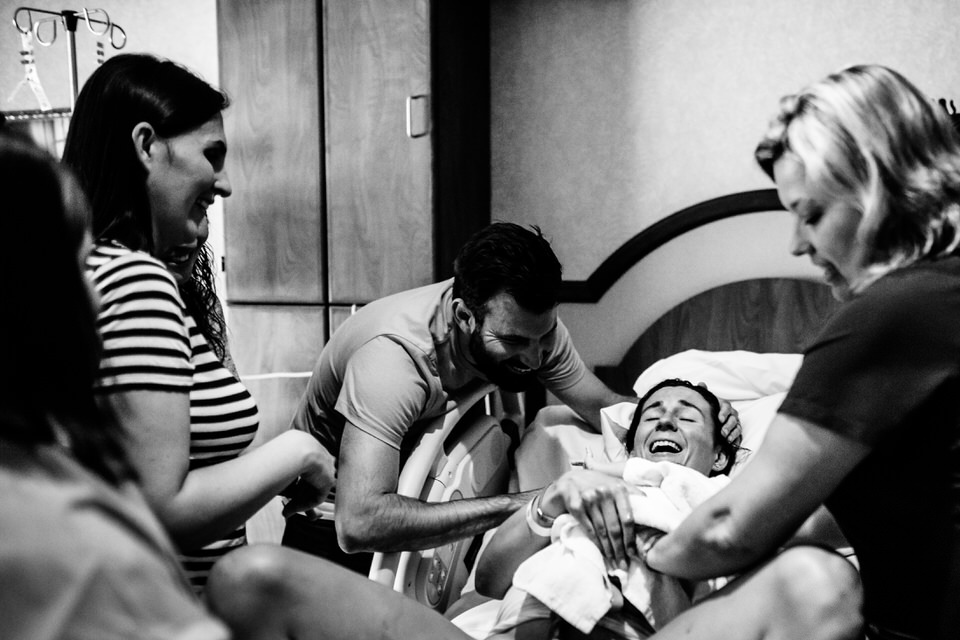Five Tips For Breaking Into Birth Photography
“Just so you know. I might throw up.”
That’s what I confessed to this beautiful and amazing mama when I offered to photograph the birth of her third child. Fortunately, for me, she accepted anyway. This was before I started my business. Before I had ultimately found my heart in family documentary and birth photography. And before I was confident that I could indeed shoot a birth without fainting, cringing, judging, quitting, or even vomiting.
For me, birth is the single most moving and visceral of human experiences. There’s nothing more powerful and humbling to photograph than labor and delivery. It can also be messy, loud, smelly, fast-paced, snail-paced, and overall emotionally draining. If you’re itching to make the journey into photographing births here are a few nuggets you’ll want to consider.
-
Educate yourself.
Do the terms breech, en-caul, placenta previa, and station -1 sound like something from a sci-fi movie? If yes, then it’s time to start integrating yourself into the birth community, my friend. Learn about the stages of labor and delivery, the differences between medicated and unmedicated births, and the role of OBs, midwives, doulas, and nurses. Read legit birth stories. Ina May’s Guide to Childbirth is an excellent resource, particularly for mamas delivering without medication. Hook up with a local doula and pick her brain. The more you know, the more comfortable you’ll be during those surreal hours and high-intensity moments of labor and delivery.
Try JPEGmini Pro For Free Now!
-
Be humble.
Understand that you are in a woman’s sacred space. During a portrait session or even a wedding at times, you might well be the dang most important person there. But at a birth, you are last in the pecking order. You don’t tell the midwife to move aside so you can get a shot. You don’t ask a laboring mama to turn her head towards the light. You do need to stay out of everyone’s way with ninja-like skills. And you may be kicked out of the room or asked not to photograph at times. Swallow your pride and do as you’re told because it’s not about you. “But what if I don’t get the shot I wanted, Christine?” Well, that happens. There are a lot of would-be stellar shots, and that’s OK. Because there are also some stellar shots you will get.
-
Know low and artificial light.
Most women do not give birth outside during golden hour. Although I’d be first in line to photograph one if she did. In many birthing spaces, lights are kept low at least until the moment of delivery. There may be no windows in the room. Some birth photographers will bounce an on-camera flash. Others do not use a flash at all. Either way, be comfortable shooting in low light. In hospitals, you’ll also have the lovely overhead fluorescent lights to tackle. If your shutter is higher than 1/60th be aware that some frames may look pink and others green because of the cycling of the overhead lights. But it’s nothing that can’t be fixed in post-production, thankfully.
-
Understand an on-call life.
I’ve heard more than once of a woman hiring a photographer who did not specialize in birth to photograph her labor and delivery. When active labor began, those photographers tapped out, stating it was an “inconvenient time.” Even if you refund your client’s money, that’s an incredibly crappy thing to do to someone who has trusted you to document this once-in-a-lifetime moment for her and her child. During your on-call time, you give your client much of your life. You stay close to home. You lay off the beer and wine or anything else that dulls your faculties. If you have kids, you have childcare arranged for any moment that you might need to leave them to attend the birth. If you contracted a client who could deliver over a holiday, you are mentally prepared to miss that time with your family. You get your butt out of bed, grab your gear (which is always ready to go, BTW), a cup of coffee, and head to your client, no matter what time of day or night you get the call. An on-call life is no joke.
-
Know your worth and charge it.
Because being on call can be emotionally, logistically, and physically exhausting. Because you don’t know how long you will be present at a birth. Because you are working your arse off to get amazing shots while not impeding anyone else’s job. Because your lighting conditions will most often be less than ideal and you’ll have more work to do in post-production. Because you are giving VALUE that your client may not fully realize until that child graduates from college. Because of all these reasons and more, it’s imperative that you do your math. Know what it takes financially to photograph a birth and all that goes with it. Don’t forget that you get a salary too. And then price accordingly. Avoid falling into the trap of “Oh, I’ll just charge $200 to try it out.” Because now another person in the world and all of her friends and relatives will believe that’s what it takes to make a living as a birth photographer. And that isn’t close to sustainable, my friend. Run your numbers. Tell your clients your regular price. Then, sure, offer your first few births at a lower portfolio-building rate. If you need help figuring it all out, there is an awesome community of birth photographers to offer support and education. I’d start here.
Christine Wright is a family documentary and birth photographer, who makes pictures in New Jersey and Pennsylvania. She giggles every time Jpeg Mini makes a sound notification that her files have been optimized. You can view her work at www.christinewrightphoto.com.







